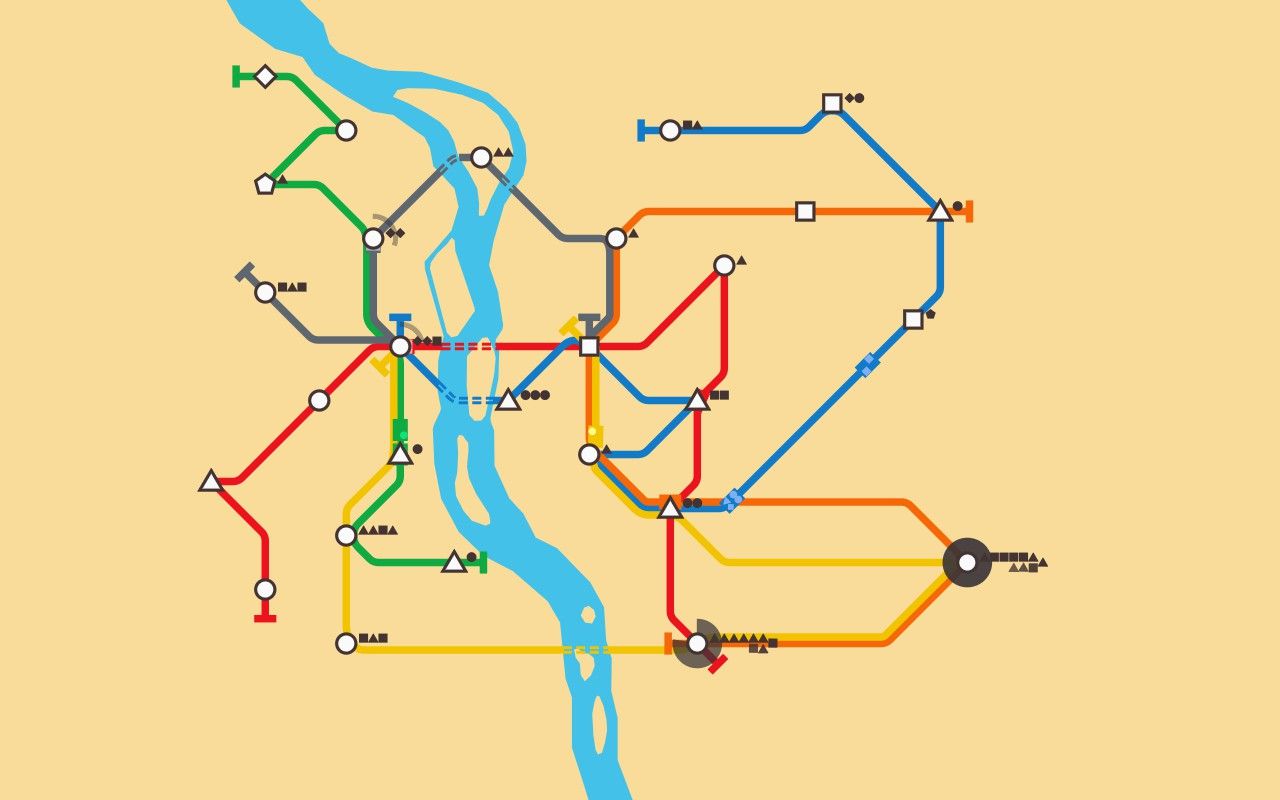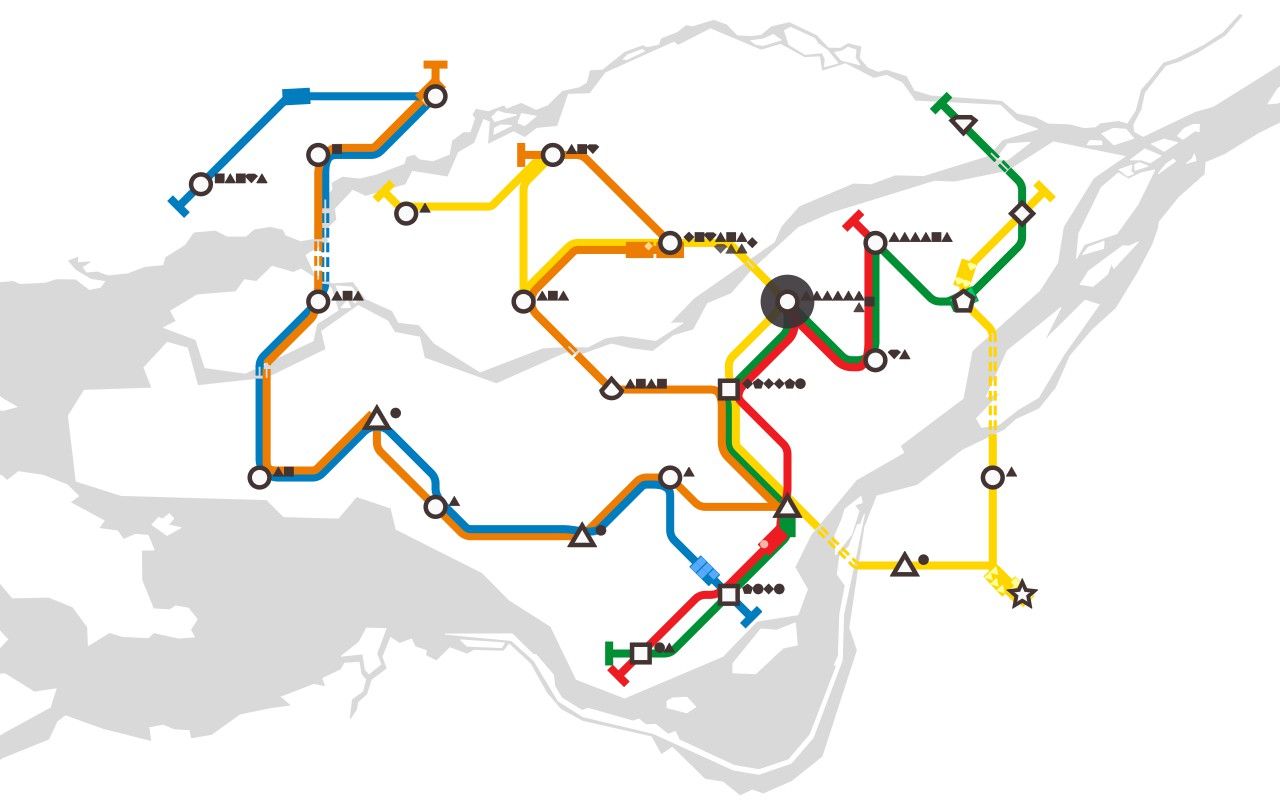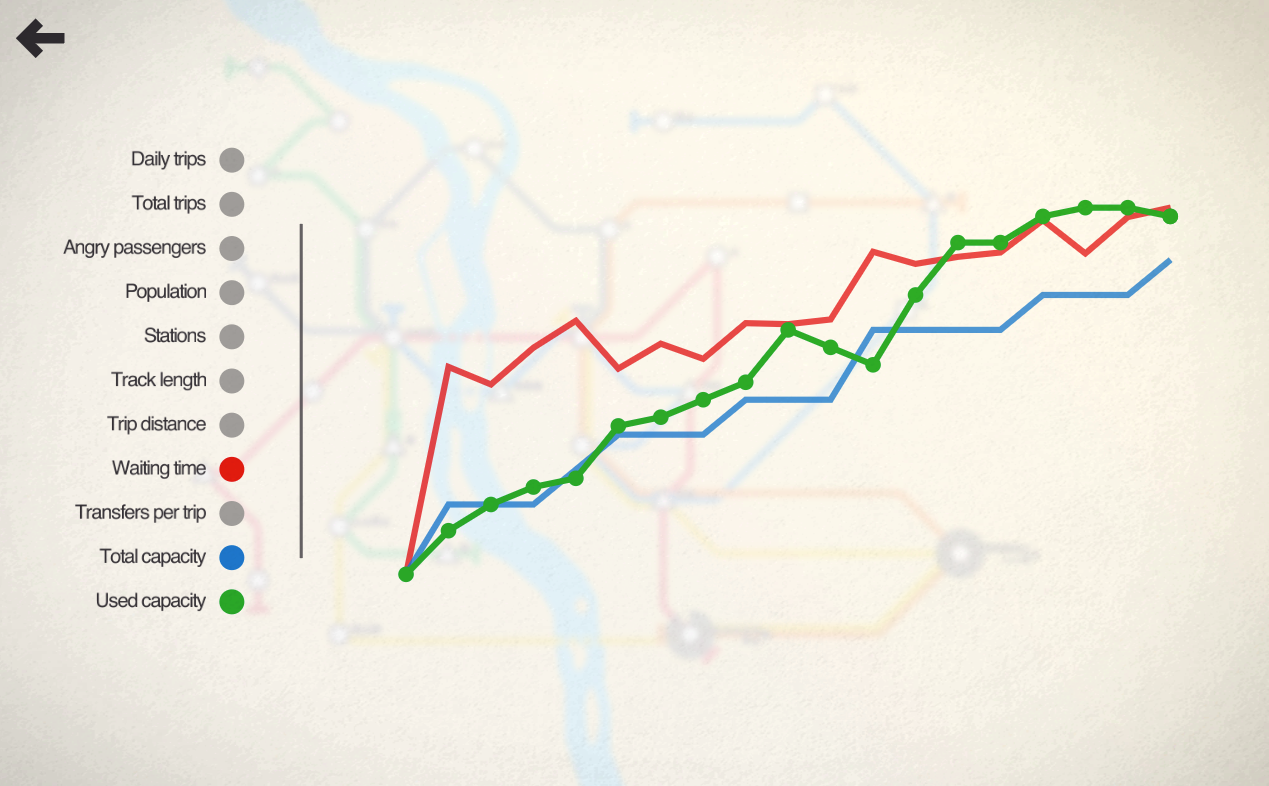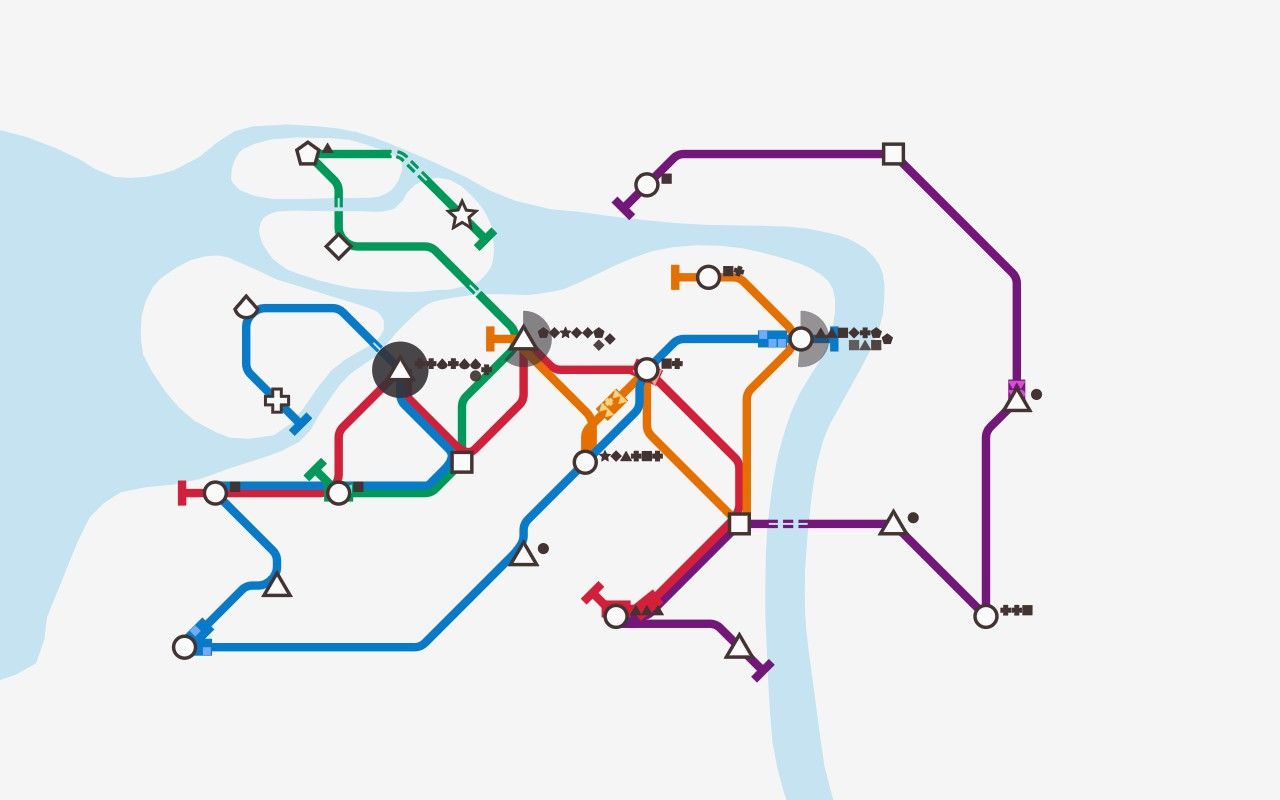Last-Minute NYC Holiday Gift Guide 🎁
We’ve created a holiday gift guide with presents for the intrepid New Yorker that should arrive just in time—


Subway-related aggravation in New York is such an ingrained part of living here that it can sometimes feel shocking when you take a train that shows up in a reasonable amount of time or isn’t delayed because of train traffic. If you’ve lived here long enough, you’ve probably reached a moment where you thought that you could design a more efficient subway system. Well good news, sort of: Mini Metro, a downloadable game on Steam, allows you to put your money where your mouth is and try to build your own working train systems based on cities around the world. Will you prove yourself to be a brilliant transit mind, or will you leave a trail of angry commuters calling for your head?
The basics of Mini Metro are deceptively simple. The levels are 12 different cities, places like London, New York, Osaka or Melbourne, laid out on maps that look vaguely like the cities they’re supposed to represent, and they come with different challenges. Cairo forces you to work with cars that only carry four passengers at a time. New York has three great land masses, but the level can get complicated thanks to a couple small islands in between two of them. Montreal is made up of a series of islands, and Saint Petersburg only gives you access to five train lines. You start each map with three color-coded train lines and three shapes: a square, a circle and a triangle. Each shape is a station, and each station becomes populated by triangle, circle and square people, who expect you to connect the stations in a way that gets them to the corresponding shape.

Your score, which is used to unlock new cities, is determined by how many people are able to ride your trains and get dropped off at the correct station. Things start slow and calm, but soon randomly generated shapes start popping up in other places on the map, forcing you into making important decisions. Do you save your extra lines and try to run just a couple really long ones with multiple trains? How many of your limited amount of tunnels should you use to get to those stations on another side of the river? How do you solve the problem of a particular station becoming the drop off point for just one kind of shape when that shape is only on one line? You can either struggle with these questions live, as the system runs, or you can pause to consider things more slowly, while still moving lines around.
At the end of every “week” that you’ve kept a system running, the game will pause and allow you to pick upgrades for your system. Usually you have the option to add another line (up to 6 or 7, depending on the system), but you’ll also have to choose between that and something like adding an extra train carriage or locomotive to a line with a high population or getting yourself a new tunnel. As more and more days go by, your system becomes more chaotic, with lines crossing all over the map, and it’s up to you to make sure that lines aren’t so long that stations are left to just gather more and more people waiting for a train. The game ends when any station in your system becomes too overcrowded. You’re alerted to this first by the sight of shapes jumping around agitatedly at a crowded station, and if they aren’t picked up, a countdown circle begins at the station. If the circle reaches the completion with the station still full of people, that’s that.

After a round is over, you can snap a picture of the final state of your transit system, watch a video of it all happening and check out stats that break down things like the total population of your city, the amount of angry passengers you had stewing while waiting for a train, your system’s capacity at the end and the amount of track you laid down. The stats ultimately don’t count for much, but they’re fun to look at after a good round.

That random nature of each level also makes sure the game has plenty of replay value. After scoring high enough to unlock a city, you can always go back and play previous cities again in the normal mode, or play around in “Endless” mode, which is more of a sandbox that allows for low stakes experimentation. Stations don’t overcrowd in Endless mode, and success is instead measured in “efficiency,” which is defined as the amount of passengers delivered over a week divided by 7. For the truly dedicated or those looking for an immense challenge, there’s “Extreme” mode, which doesn’t allow you to modify your lines once you lay them down.
There are also a number of achievements you can try to unlock, challenging you to do seemingly impossible things like run the London level with only one tunnel or moving 1600 passengers around Montreal using only four lines. And as long as you stay connected to the internet, there are daily challenges that the game will give you, allowing you to test your system building prowess against other builders around the world.

Is it fun? There’s definitely an appeal, both for the transit nerd someone just looking to kill some time with a relaxed, low-stakes game. The game’s simple design pops with color, especially if you can get seven lines up and running, and the stress of figuring out how to connect a shape that popped up in a remote corner of the map to your existing system is balanced by the fact that it can be relaxing to get a moment to watch a huge system you built ferry people all over a city. As you play, you might find yourself lost on a single level for a half hour at a time, and feed even more time will slip by if you get particularly engaged playing a level on Endless mode.
The random nature of where the shapes pop up and when you’re offered extras like tunnels and interchanges (which allow you to fit more people in a station) can be frustrating, but if you want to get nerdy and granular about it, you can just pretend that the political realities of your city make it impossible to build a new tunnel every time you want to. If anything, thinking like that might engender more sympathy for city planners and transit authorities around the world.
Next, check out 10 essential apps every New Yorker should have.
Mini Metro is available for download on Steam and is supported on Windows, Mac and Chrome systems.
Subscribe to our newsletter